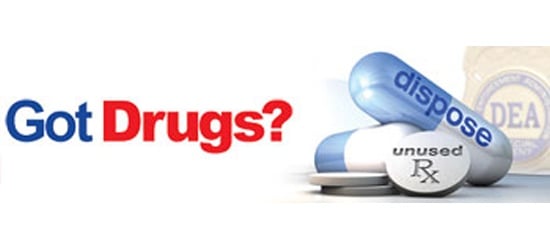 The biopharmaceutical industry believes that any community-driven drug disposal program should involve local law enforcement and be structured to prevent drug abuse and diversion.
The biopharmaceutical industry believes that any community-driven drug disposal program should involve local law enforcement and be structured to prevent drug abuse and diversion.
This Saturday, Sept. 26, the U.S. Drug Enforcement Administration (DEA) will host its 10th annual National Take Back Day, which coordinates community-driven, law-enforcement led events for the public to dispose of their expired, unused or unwanted medications in a safe and convenient way.
Be sure to follow the tips below to make the most of National Take Back Day.
When and how can I dispose of my medications? 
From 10 a.m. to 2 p.m. on Sept. 26, you can dispose of medications at a local collection site. The DEA provides a full list of collection sites in your local area, which can be accessed by entering your zip code or address.
Check out the list before making plans to drop-off medications, as some locations may only be participating through certain hours or may have regulations on what medicines can be disposed of and how they should be brought in.
What medications should I get rid of?
Before Saturday, take the time to sort through your medicine cabinet. Check expiration dates, analyze the appearance of the medicine and determine whether you actually need to have the medicine in the house. Also determine whether disposing of the medicine will help avoid potential abuse and diversion. These are all helpful indications on whether you should dispose of it.
I won’t be able to make it to my local event – what else can I do?
In addition to DEA’s National Take Back Day, local communities will often organize a local medication take back event during various times of the year. Like we stated before, law enforcement oversight is needed and programs should be structured to prevent theft or diversion of unused medication and protect patient privacy.
It’s also important to remember that in most cases, you can safely dispose of your unused or unwanted medications at any time by following the following four-step in-home disposal process:
- Step 1: Pour medication into a sealable plastic bag. If the medication is in solid form (pill, liquid capsule, etc.), add water to dissolve it.
- Step 2: Add kitty litter, sawdust, coffee grounds or another unpalatable material to the plastic bag to make the solution less appealing for pets and children.
- Step 3: Seal the plastic bag and put it in the trash.
- Step 4: Remove and destroy all identifying personal information (for example, the prescription label) from the medication containers before recycling them or throwing them away. This helps to ensure medical privacy.
There are some medicines that have specific instructions for disposal and cannot be disposed of in the household trash or through local take back programs. Instructions for proper proposal should be provided when you are prescribed these medications, but if you have any questions or concerns, ask your doctor or pharmacist for more information.
For more information on proper disposal, visit phrma.org/safe-use-disposal.



 The
The 
